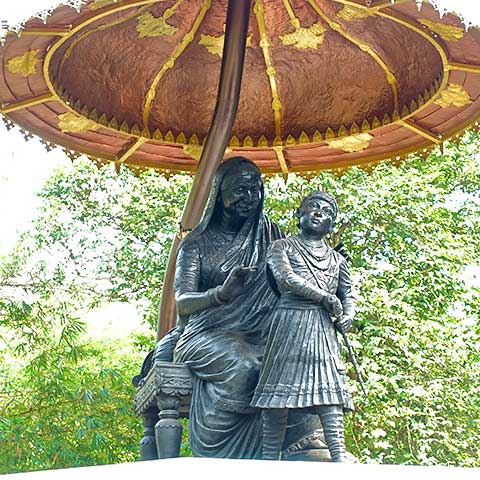MUMBAI: BECOMING THE "URBS PRIMA IN INDIS"
Before the skyscrapers, before the colonial arches and the bustling port, there were seven islands. Bombay. Not a single city, but a scattered cluster of isles – Bombay, Parel, Mazagaon, Mahim, Colaba, Worli, and Old Woman’s Island – each with its own story, each a piece of land drifting in the Arabian Sea. Long before the East India Company ever set foot here, these islands were home to ancient stone-age settlers. The earliest whispers of life here trace back to the South Asian Stone Age, their footprints etched in the sands of Kandivali.
But it was the Koli fishermen who became the first true inhabitants of this untamed archipelago. They sailed in wooden boats, casting their nets beneath the relentless sun, while the goddess Mumbadevi watched over them, her name echoing through the ages to become the very name of the city – Mumbai.
Around the first century CE, as empires rose and fell, the basalt cliffs of Borivali bore witness to a new spiritual frontier. The Kanheri Caves were carved from stone, transforming into a center for Buddhist teachings, their darkened chambers lit by flickering oil lamps and the chants of monks. But Buddhism was not the only spiritual thread woven into the island’s fabric. The Mandapeswar Caves, tucked away in Borivali, became a haven for the Shaivite Pashupatha sect, where ascetics gathered to honor Lord Shiva.
Time marched on, and with it came new powers and new rulers – the Satavahanas, the Western Satraps, the Kalachuris, and the Rashtrakutas – each dynasty leaving its mark, shaping the city’s identity one stone, one temple, one monument at a time. By the 12th century, the Walkeshwar Temple rose in the south, while the Banganga Tank reflected the heavens in its still waters – a sacred pond that still stands today, cradled by towering skyscrapers and the ever-present sea breeze.
In the late 13th century, Bhimdev, ruler of Mahikawati, established a new capital in modern-day Mahim, bringing settlers from Saurashtra. The Delhi Sultanate eventually claimed the islands, but Bombay remained a cluster of villages, untouched by monumental battles.
By the 16th century, the Portuguese arrived, drawn by Bombay’s natural harbors. They fortified the islands, building watchtowers and chapels, and renamed the place "Bom Bahia" – the Good Bay. But in 1661, as part of Catherine of Braganza’s dowry, Bombay was handed to the British. The East India Company saw potential in the harbor, transforming these sleepy fishing villages into a fortified port city.
The Parsis, originally from Persia, migrated to Bombay, leveraging their shipbuilding expertise and trading acumen. They became prominent merchants and benefactors, establishing trading houses, hospitals, and schools that shaped the city’s commercial landscape.
By the 19th century, Bombay began its transformation into Urbs Prima in Indis – the first city of India. Fueled by the cotton trade and the opening of the Suez Canal, wealth flooded into the city, and Gothic Bombay rose – a labyrinth of arches, spires, and clock towers echoing London’s grandeur.
In the early 20th century, Art Deco arrived, a modern style embraced by wealthy Indians. Marine Drive became lined with sleek, geometric buildings adorned with tropical motifs, juxtaposed against British Gothic architecture.
Today, the legacy of these diverse influences can still be felt across Mumbai’s sprawling cityscape. From ancient rock-cut caves to colonial-era Gothic towers, from bustling Irani cafés to historic bazaars – each landmark tells a story. And to truly understand Mumbai, one must wander through its many layers. Here are over 120 iconic spots that capture the essence of this ever-evolving city – a living museum of history, culture, and commerce.


